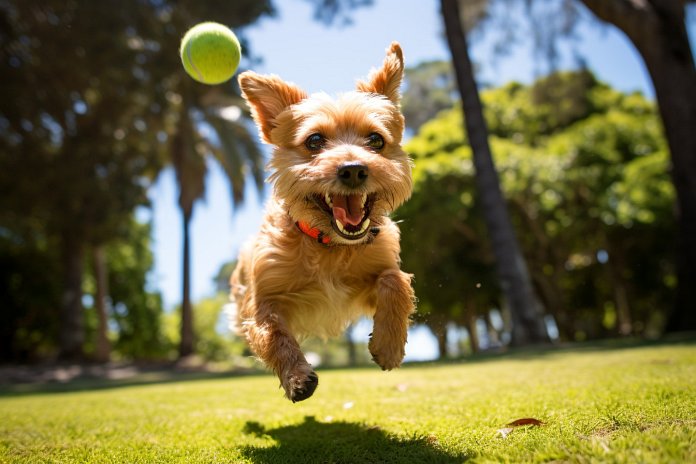
Losing a tooth as a child was exciting because it meant a visit from the tooth fairy and some money. Similarly, puppies lose their teeth and replace them with new ones. However, adult dogs usually don’t lose their teeth unless they have periodontal disease or experience trauma. If your dog has lost all their teeth, they can still live a happy life without them.
Signs of Teeth Issues in Dogs
You don’t need to be a dentist to notice if your dog is having teeth problems. Signs to look out for include loose teeth, bloody saliva, pain, difficulty picking up or chewing food, untidy eating habits, drooling, and making noises while yawning or chewing. You may also notice discharge or swelling around the nose or face. Other signs include bleeding, receding, swollen gums, bad breath, pawing at the mouth, or reduced appetite.
Body Language
Watch out for signs such as whining, drooling, and exposed teeth, as these can indicate tooth problems in dogs.
More Clues
Other signs that your dog may need dental care include reduced appetite, loose teeth, bleeding gums, and difficulty chewing.
History of Dog Dental Care
Dental care for animals has mainly focused on horses throughout history. Animal dentistry for small animals, including dogs, didn’t come about until the 20th century. Brushing a dog’s teeth was seen as unusual five decades ago, but it has now become a normal practice due to the increased understanding of the importance of dental care for dogs.
Science Behind Dogs with No Teeth
Puppies grow 28 milk teeth by the time they are 3-6 weeks old, which are later replaced by 42 adult teeth. Adult tooth loss in dogs is usually caused by periodontal disease or trauma. Periodontal disease affects 85% of dogs aged 4 and over and can lead to tooth loss and other health issues.
Caring for a Dog with No Teeth
A dog with no teeth is better off than one with rotten teeth. They can still cope with mealtime adjustments and just need some help and patience from you. You can mash up their food with warm water using a fork or switch to canned dog food. It’s important to select a brand that your dog enjoys, and homemade food is also an option. Brushing your dog’s gums regularly is still necessary for dental hygiene, ideally every day or at least three to four times a week.
“Taking care of a dog with no teeth requires patience and adaptability, but it’s a small price to pay for a pain-free and happy pup.”

Tips & Things to Know
1️⃣ Pay attention to signs of dental issues in your dog. Look out for loose teeth, bloody saliva, difficulty picking up or chewing food, untidy eating habits, drooling, and swelling or discharge around the nose or face. If you notice any of these signs, take your dog to the vet for immediate attention.
2️⃣ Be aware of your dog’s body language to identify tooth problems. Whining, drooling, exposed teeth, reduced appetite, loose teeth, bleeding gums, and difficulty chewing are all signs that your dog may be experiencing dental issues.
3️⃣ Take care of a dog with no teeth by adjusting their diet. You can mash up their food with warm water or switch to canned dog food. Choose a brand that meets nutritional requirements and that your dog enjoys eating. You can also make homemade food by cooking meat, vegetables, and rice and blending them in a food processor. Remember to brush your dog’s gums regularly for dental hygiene.
Frequently Asked Questions, Answered ✅
1. What are the signs that a dog is having issues with their teeth?
– The signs include loose teeth, bloody saliva, pain, difficulty picking up or chewing food, untidy eating habits, drooling, noises while yawning or chewing, discharge or swelling around the nose or face, bleeding, receding or swollen gums, bad breath, pawing at the mouth, and reduced appetite.
2. How can you tell if a dog is having tooth problems based on their body language?
– Signs in a dog’s body language that indicate tooth problems include whining, drooling, and exposed teeth.
3. What is the history behind dog dental care?
– The history of animal dentistry initially focused on horses, with the Chinese practicing dental care for horses as early as 600 BC. The first dental school for animals was created in France in 1762. In the 20th century, animal dentistry for small animals, including dogs, was established. Today, brushing a dog’s teeth is a common practice among dog owners.
4. What are the common causes of adult tooth loss in dogs?
– The most common cause of adult tooth loss in dogs is periodontal disease, which affects 85% of dogs aged 4 and over. Trauma, such as fights with other dogs or head injuries, can also result in tooth loss.
5. How can you care for a dog with no teeth?
– A dog with no teeth can adapt and cope during mealtimes with some help and patience from the owner. Options include mashing up the dog’s food with warm water, switching to canned dog food (avoiding large chunks), or preparing homemade food using cooked meat, vegetables, and rice blended in a food processor. Dental hygiene should still be maintained by brushing the dog’s gums daily or at least three to four times per week.